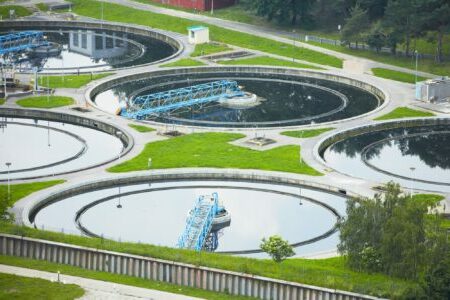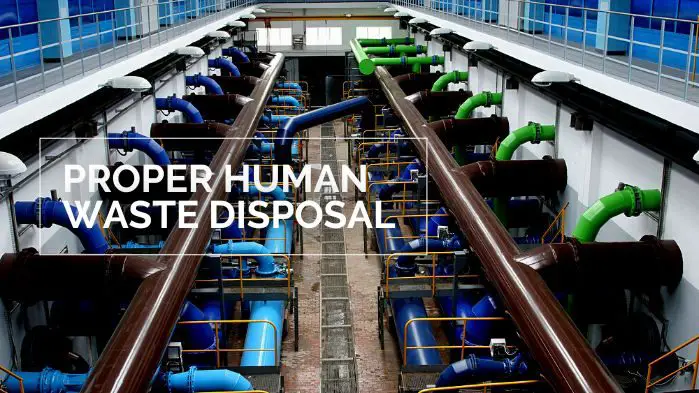Human waste, also known as feces or sewage, should be disposed of properly to prevent the spread of disease and protect public health. In most places, sewage is collected by local governments or private companies and treated at a wastewater treatment plant. The treated wastewater is then released back into the environment or used for irrigation.
To dispose of human waste, you can use a toilet connected to a sewage system. If you are in an area without a sewage system, you can use a pit latrine or a portable toilet. It is important to follow local regulations for the disposal of human waste.
Importance of Proper Human Waste Disposal
Proper disposal of human waste is essential for several reasons. It helps to prevent the spread of disease by keeping fecal matter away from areas where it can come into contact with humans. This is especially important in areas with poor sanitation or limited access to clean water, where diseases like cholera, typhoid, and diarrhea can be transmitted through contact with feces.
Proper disposal of human waste also helps to protect the environment by preventing contamination of water sources and soil. When sewage is not treated correctly, it can seep into groundwater, rivers, and other bodies of water, causing pollution and potentially leading to health problems for people and animals.
In addition to these health and environmental benefits, proper disposal of human waste can also have economic benefits. For example, it can reduce the cost of cleaning up contaminated water sources and prevent the loss of agricultural productivity due to soil contamination.
Proper disposal of human waste is essential for protecting public health, the environment, and the economy.

How Human Waste is Collected and Treated
In most places, human waste is collected through a sewage system and transported to a wastewater treatment plant for processing. The sewage system typically comprises a network of pipes that carry waste and wastewater from homes, businesses, and other buildings to a central treatment facility.
The sewage is treated at the wastewater treatment plant through a series of processes to remove contaminants and reduce the number of harmful bacteria and viruses. The exact treatment process will depend on the facility and the specific needs of the area, but it often involves the following steps:
- Primary treatment involves removing large solid materials from the sewage using screens or sedimentation tanks.
- Secondary treatment involves using bacteria and other microorganisms to break down the remaining organic matter in the sewage. This is typically done through biological nutrient removal, which reduces the amount of nitrogen and phosphorus in the wastewater.
- Tertiary treatment: This optional step involves further purifying the wastewater using filtration, ultraviolet light, or chemical treatment.
After the wastewater has been treated, it is usually released back into the environment, typically into a river, lake, or ocean. In some cases, it may be used for irrigation or other purposes.
It is important to note that not all sewage treatment plants are equally effective, and some may not follow the recommended treatment processes. This can lead to the release of untreated or partially treated sewage into the environment, which can have severe health and environmental consequences.
The Role of Wastewater Treatment Plants
Wastewater treatment plants are critical in collecting and treating human waste and sewage. These facilities are responsible for removing contaminants, harmful bacteria, and viruses from the sewage to make it safe to release into the environment.
There are several different types of wastewater treatment plants, and the specific processes used at a given facility will depend on the needs and resources of the area. However, most wastewater treatment plants follow a similar process that includes the following steps:
- Primary treatment involves removing large solid materials from the sewage using screens or sedimentation tanks.
- Secondary treatment involves using bacteria and other microorganisms to break down the remaining organic matter in the sewage. This is typically done through biological nutrient removal, which reduces the amount of nitrogen and phosphorus in the wastewater.
- Tertiary treatment: This optional step involves further purifying the wastewater using filtration, ultraviolet light, or chemical treatment.
After the wastewater has been treated, it is usually released back into the environment, typically into a river, lake, or ocean. In some cases, it may be used for irrigation or other purposes.
The role of wastewater treatment plants is essential for public health, environmental protection, and economic reasons. Properly treated sewage can be used for irrigation, helping to reduce the demand for fresh water and lowering the cost of agricultural production. In addition, untreated sewage can be a source of water pollution, leading to costly cleanup efforts and lost productivity.
Alternatives for Areas Without a Sewage System
Several alternatives can be used to safely dispose of human waste in areas without a sewage system. These alternatives include:
- Pit latrines: A pit latrine is a simple toilet with a seat over a pit in the ground. The pit should be deep enough to prevent the waste from contaminating the surrounding soil. Pit latrines should be located at least 50 feet away from any water source to prevent contamination.
- Composting toilets: Composting toilets use microorganisms to break down waste into compost. The compost can then be used as fertilizer for plants. Composting toilets require minimal water and do not produce sewage, making them a good option for areas without a sewage system.
- Dry toilets: Dry toilets do not use water to flush the waste away. Instead, they use a dry material, such as wood chips or sawdust, to absorb the waste and reduce odors. The waste is then removed and disposed of or composted.
- Chemical toilets: Chemical toilets use chemicals to break down waste and reduce odors. The waste is stored in a holding tank and must be emptied periodically. Chemical toilets are often used in areas without access to a sewage system or running water.
It is important to follow local regulations to dispose of human waste, regardless of the method used. Improper disposal of human waste can lead to the spread of disease and environmental contamination.
Conclusion
Proper disposal of human waste is essential for protecting public health and the environment. In most places, this is accomplished through a sewage system, which collects and transports the waste to a wastewater treatment plant for processing.
At the treatment plant, the sewage is treated through a series of processes to remove contaminants and reduce the number of harmful bacteria and viruses present. The treated wastewater is then released back into the environment or used for irrigation.
Several alternatives can be used to safely dispose of human waste in areas without a sewage system, including pit latrines, composting toilets, dry toilets, and chemical toilets. It is important to follow local regulations for the disposal of human waste, regardless of the method used, to prevent the spread of disease and protect public health.

